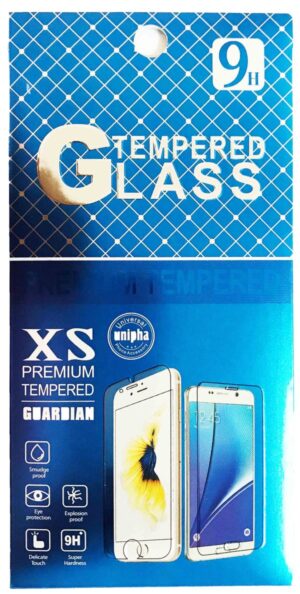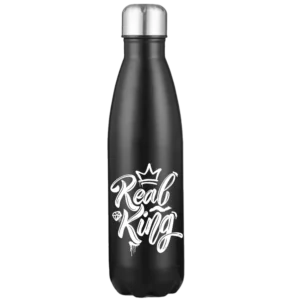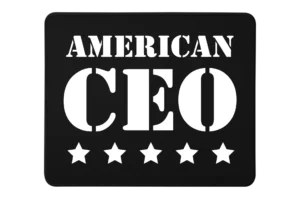Hey there, fellow business enthusiasts! Navigating the financial waters of your business can be a bit daunting, right? That’s why today, we’re diving into a nifty financial tool that can make a big difference—Commercial Net 30 Accounts. Picture this: your business needs supplies, but your cash flow is feeling a bit tight.
Enter net 30 accounts, offering a way to purchase on credit and pay within 30 days. Intrigued? Stick around as we unravel how these accounts can help manage cash flow, build business credit, and strengthen vendor relationships. Let’s get started!
Understanding Commercial Net 30 Accounts
 Image courtesy: Unsplash
Image courtesy: Unsplash
Definition and Basic Concept
Let’s dive into the definition of Commercial Net 30 Accounts, shall we? Imagine you’re running your dream business, and the orders just keep rolling in. Sounds fantastic, right? But what happens when you’ve got lots of orders but your cash flow is just a tad tight this month? That’s where Commercial Net 30 Accounts come in as your financial superhero!
In simple terms, a Commercial Net 30 Account is an agreement between your business and a supplier or vendor. It allows you to purchase goods or services now and pay for them later—precisely, within 30 days of receiving an invoice. Think of it as a short-term loan from your vendor to help ease your cash flow without breaking a sweat.
It’s like you’re telling your vendor, “Hey buddy, let’s make this purchase happen. I’ll settle up in 30 days!” While your vendor enjoys your commitment to business, you get the flexibility to manage finances more strategically. This approach not only builds trust but can also pave the way for long-lasting business relationships.
What is Creditworthiness
Now, before you get too excited about jumping into Net 30 Accounts, let’s chat about creditworthiness. This is a crucial element that determines if you’ll qualify for such an account. Just as you wouldn’t lend money to someone without knowing they’d pay you back, vendors assess your business’s ability to pay its bills before extending credit terms.
This assessment involves taking a peek into your financial history, credit records, and how well you’ve paid other suppliers in the past. The good news? Keeping your credit profile in tip-top shape can win you better terms and higher credit limits with vendors. Consider it as managing your business’s report card – a good grade here opens the door to financial benefits!
Key Aspects of Net 30 Accounts
Credit Limits and Terms
Once you’ve got the green light from a vendor, they’ll set a credit limit. Essentially, this is the maximum amount you can purchase on credit at any one time. This cap isn’t picked out of thin air; it’s based on factors like your credit history and the nature of your relationship with the vendor.
Explore the terms carefully as they can vary. Two businesses might have completely different terms with the same supplier based on their creditworthiness and negotiating skills. Consistently being a fantastic payer can help you secure higher limits and potentially sweeter terms over time.
Variations Beyond 30 Days
While Net 30 is the superstar of trade credit terms, businesses do have options beyond this classic setup. Depending on the industry you’re in and your relationship with the vendor, you might encounter alternatives like Net 15, Net 60, or even Net 90. Imagine having the option to stretch out or tighten those payment windows! This variation offers flexibility tailored to your unique business needs. It’s worth negotiating terms that align with your financial strategy and cash flow situation.
Interest-Free Payments
One of the best aspects of Net 30 Accounts is that they are usually interest-free, provided you pay within the agreed-upon timeframe. This means no extra fees piled on top of your existing invoice amount. Hooray for cost-effectiveness! However, there is a catch: fail to meet that 30-day deadline, and you might encounter some unpleasant interest charges or late fees. So, staying organized and diligent with payments is key to reaping the no-interest benefits.
In conclusion, Commercial Net 30 Accounts are more than just a payment term—they’re a tool for financial management, growth, and fostering strong vendor bonds. With a solid grasp of their mechanics and strategic use, these accounts can serve both small startups and established companies alike, offering breathing room when cash flow gets tight and paving the way for business success.
The Process of Using Net 30 Accounts
Navigating the process of using net 30 accounts is crucial for any business looking to leverage the benefits of delayed payments and enhanced vendor relationships. Let’s dive into the steps involved, from the initial application to fulfilling payment responsibilities.
Application and Evaluation
The journey with net 30 accounts kicks off with the application process. Here’s what happens:
– Application Submission: First, a business expresses interest in a net 30 account, usually by completing an application form where they’ll provide critical financial information and business details.
– Credit Evaluation: After receiving your application, vendors undertake a rigorous credit evaluation process. This typically involves scrutinizing your credit history, financial statements, and payment records with other suppliers.
– Approval and Credit Limit: If your business fits the bill, the vendor approves your application and sets a credit limit. This is the maximum amount you’re allowed to purchase on credit, and it can fluctuate based on your creditworthiness and the vendor’s policies.
Purchase and Invoice
Once your net 30 account is active, you’ll be ready to make purchases while keeping an eye on the credit limit:
– Placing Orders: With approval and credit limits in place, you can begin ordering goods or services up to the specified limit.
– Receiving Invoices: Upon delivery of the goods or services, the vendor issues an invoice. This document will clearly outline the terms of the net 30 agreement, including the payment deadline—typically set 30 days from the invoice date.
Payment Responsibilities
Timely payments are pivotal when using net 30 accounts. Here’s how to handle this phase effectively:
– Payment Deadline Awareness: Keep track of the invoice date and make sure you settle the full amount by the due date—30 days later. This is crucial for maintaining a positive credit profile and strong vendor relationships.
– Consequences of Late Payment: Missing the payment deadline could lead to late fees, potential interest charges, and a tarnished business credit rating. Always prioritize your payment commitments to avoid these pitfalls.
Advantages of Net 30 Accounts
Net 30 accounts pack a punch when it comes to benefits for businesses. Let’s delve into some of the compelling advantages they bring to the table.
Cash Flow Optimization
One of the standout benefits of net 30 terms is optimizing cash flow. Here’s how it works:
– Debt Delay: By deferring the payment of invoices by 30 days, businesses can hang onto their cash longer, allowing them time to generate revenue before payments are due.
– Seasonal Flexibility: For businesses experiencing seasonal sales spikes or dips, this payment structure provides much-needed breathing room, helping manage finances smoothly during leaner months.
Building a Strong Credit Profile
Utilizing net 30 accounts can significantly bolster your business’s credit profile:
– Positive Credit History: Consistently paying invoices on time helps establish a robust credit history. Over time, this can improve your business credit score, crucial for securing favorable loan terms and vendor relationships in the future.
Streamlined Purchasing and Vendor Relationships
Engaging with net 30 accounts can foster more efficient purchasing processes along with bolstering vendor ties:
– Simplified Procurement: Net 30 accounts streamline the buying process by eliminating the need for immediate cash outflow, allowing businesses to concentrate on core activities without financial strain.
– Enhanced Vendor Connections: Adhering to net 30 terms can lead to a stronger bond with vendors. Vendors appreciate reliable partners, and timely payments could earn you perks such as increased credit limits or special deals, cementing long-lasting, mutually beneficial relationships.
In conclusion, adopting net 30 accounts holds attractive advantages for businesses intent on improving cash flow, strengthening credit ratings, and refining vendor relations. By understanding the application-to-payment process and leveraging the benefits intelligently, these accounts can become a crucial component of your financial strategy, supporting growth and stability.
Responsible Usage and Considerations
When introduced to commercial net 30 accounts, the allure of improved cash flow and enhanced business relationships can’t be ignored. However, like all financial tools, responsible usage is key to reaping the full benefits. Let’s dive into some crucial considerations you should keep in mind when managing your net 30 accounts.
Importance of Timely Payments
Timely payments are the bread and butter of maintaining a strong relationship with your vendors and keeping your business in good financial health. Here’s why staying on time is crucial:
– Avoid Late Fees: Vendors might impose hefty late fees for overdue payments, which can take a chunk out of your profits.
– Protect Your Credit Score: Late payments can tarnish your business credit profile. A low credit score can make it difficult to secure future credit or loans.
– Preserve Relationships: Consistent failure to pay on time could harm your business reputation, making vendors less willing to extend favorable terms in the future.
Being proactive is the key. If there’s a hiccup in your cash flow, communicate early with the vendor to explore possible solutions, like extensions or partial payments.
Avoiding Overextension
While net 30 accounts can be tempting, it’s important not to get carried away. Overextending yourself can lead to cash flow issues that negate the benefits of net 30 arrangements. Here’s how you can manage it:
– Assess Your Finances: Always ensure you have the means to meet your obligations. Regularly evaluate your budget and expenditures.
– Strategic Purchasing: Only use credit for purchases you can repay comfortably within the due period.
– Limit Exposure: Aim to keep your outstanding balances lower than your total available credit, acting as a cushion against unexpected expenses.
By being cautious and strategic, you can enjoy the benefits of net 30 accounts without compromising your financial stability.
Understanding Payment Terms
Each net 30 arrangement can come with its unique set of terms and conditions. Understanding these terms thoroughly is vital. Pay attention to:
– Due Dates: Make a note of all payment due dates; some vendors may offer brief grace periods, while others are stricter.
– Late Payment Penalties: Understand any fees or interest rates applied to late payments.
– Early Payment Incentives: Know if paying early offers any discounts or other benefits, and evaluate if these savings are worth it for your cash flow situation.
Before you commit, reading the fine print can save you headaches and money.
Complementary Tools and Alternatives
 Image courtesy: Unsplash
Image courtesy: Unsplash
Although commercial net 30 accounts are fantastic tools for businesses, they’re not the only option for managing finances smartly. Let’s explore some complementary tools and alternatives that can enhance your financial strategy.
Early Payment Discounts and Financing
Some vendors offer early payment discounts, which can be a favorable option if you have the means to pay before the net 30 deadline. Here are some perks:
– Cost Savings: Taking advantage of early payment discounts can lead to significant savings over time.
– Strengthened Vendor Relationships: Vendors appreciate early payments as they improve their liquidity, which can bolster your partnership.
Additionally, if you find yourself in a temporary cash crunch, alternatives like invoice financing can provide the liquidity you need by allowing you to sell your unpaid invoices for immediate cash.
Business Credit Cards and Loans
Using business credit cards or short-term loans as financial tools can be incredibly beneficial:
– Business Credit Cards: They offer a revolving credit option with the opportunity to earn rewards or points. Just ensure that balances are paid off promptly to avoid interest charges.
– Short-Term Loans: These can be ideal for specific, larger purchases. Compare different lenders to secure the best interest rates and terms that align with your business strategy.
These tools provide the flexibility to manage unexpected expenses and invest in growth opportunities without immediate cash outflows.
Lines of Credit
A business line of credit is another versatile tool that offers a flexible way to manage cash flow:
– Flexible Access: You can draw on it as needed up to a certain limit and pay interest only on the amount used.
– Peace of Mind: It acts as a financial safety net for unforeseen circumstances or seasonal business dips.
A line of credit can complement your net 30 accounts, providing additional liquidity and ensuring that your business operates smoothly during lean patches or sudden opportunities.
In conclusion, while commercial net 30 accounts can serve as a fundamental resource for your business, understanding and combining them with other financial tools and tactics can enhance your business’s financial robustness. Whether you’re navigating through a busy season or investing in future growth, these strategies help ensure that your financial operations are smooth sailing.
Conclusion
As we wrap up our exploration of commercial net 30 accounts, it’s clear that these financial arrangements offer a powerful blend of benefits for businesses, both large and small. By enhancing your cash flow and building credit reliability, net 30 accounts provide a flexible framework that can support business growth and stability.
Remember, the success of using net 30 accounts hinges on responsible management—making timely payments, maintaining good communication with vendors, and understanding the terms and conditions thoroughly. With these practices in place, you can cultivate strong vendor relationships and potentially enjoy perks like extended credit limits or early payment discounts.
Additionally, consider complementing net 30 accounts with other financial tools. Whether it’s leveraging early payment discounts, utilizing business credit cards, or exploring short-term financing options, having a diverse financial strategy can bolster your business’s resilience.
So, if you haven’t already tapped into the potential of commercial net 30 accounts, now might be the perfect time to consider them as part of your business financial toolkit. With prudent use, they can open doors to new opportunities and contribute significantly to your company’s long-term success. Happy business building!









